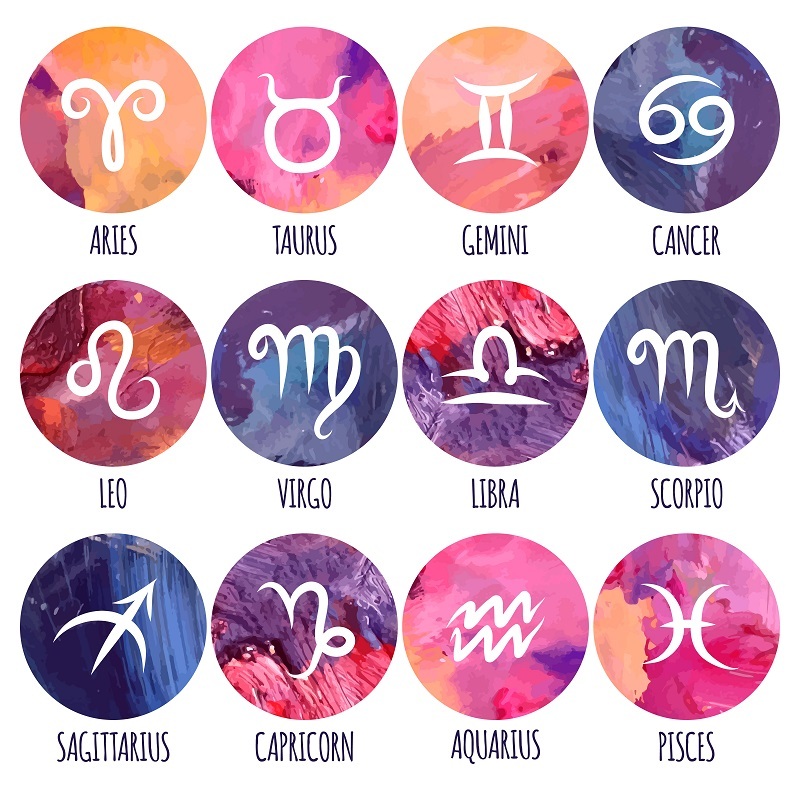Tulip facts that will enhance your flower knowledge
Posted on 17/08/2025
Tulip Facts That Will Enhance Your Flower Knowledge
Tulips are more than just vibrant splashes of color in spring gardens -- these exquisite flowers carry a rich tapestry of history, symbolism, and fascinating science. From their origins steeped in mystery to their impact on global economies and cultures, tulips continue to enchant garden enthusiasts and flower aficionados alike. If you're looking for fun, informative tulip facts that will broaden your flower knowledge, this guide is for you. Dive in to discover everything from quirky trivia to expert cultivation tips and deepen your appreciation for these iconic blooms!
1. The Origins and History of Tulips
Tulips are often associated with the Netherlands, but their story begins much further east. Get ready to enhance your knowledge of how tulips captured the world's imagination.
Central Asian Beginnings
- Tulips originated in Central Asia, specifically the mountainous regions of today's Kazakhstan, Tajikistan, and Uzbekistan.
- The word "tulip" is believed to come from the Persian word dulband, meaning "turban," referencing the tulip's turban-like bloom.
- Wild tulips still grow in the steppe regions, painting hillsides with early spring color.
The Ottoman Empire's Floral Jewel
- Tulips were cultivated by the Ottoman Turks as early as the 10th century.
- They became a symbol of abundance and indulgence during the "Tulip Era" (1718-1730) of the Ottoman Empire.
- Ottoman sultans prized rare tulips, inspiring poets and artists.
Arrival and Obsession in Europe
- Tulips arrived in Europe in the 16th century, with Carolus Clusius planting one of the first bulbs in the Leiden University Botanical Garden in the Netherlands.
- Their rarity and beauty triggered "Tulip Mania" in 17th-century Holland, creating the world's first speculative bubble around tulip bulbs!

2. Diversity in Tulip Varieties and Colors
Did you know there are over 3,000 registered cultivars and wild species of tulips? Tulip facts are never complete without celebrating their stunning diversity.
Major Tulip Groups
- Single Early Tulips: Compact with cup-shaped blooms, perfect for beds and borders.
- Double Early Tulips: With lush, peony-like petals, they bring dramatic flair to spring gardens.
- Triumph Tulips: Admired for their array of colors and sturdy stems--excellent for cut flowers.
- Darwin Hybrid Tulips: Iconic tall tulips with large, long-lasting blooms.
- Parrot Tulips: Famous for feathery, ruffled petals and unique patterns.
- Fringed Tulips: Characterized by their delicate, lace-like fringes.
Tulip Color Meanings
- Red tulips: Symbolize deep love and passion.
- Yellow tulips: Represent cheerful thoughts and sunshine.
- White tulips: Stand for purity, peace, and forgiveness.
- Purple tulips: Evoke royalty and admiration.
- Black tulips: (actually deep purple/burgundy) signify mystery and elegance.
Interesting tulip fact: No blue tulip exists in nature! Florists and breeders have tried for centuries, but blue pigments continue to elude horticulturists.
3. Unique Tulip Biology: How Tulips Grow and Thrive
Structure and Lifecycle
- Bulbs, not seeds, are the main propagation method for most tulips--allowing for rapid, uniform growth.
- Tulips are perennial: Once a bulb is planted, it can flower for several years if cared for correctly.
- After blooming in spring, tulip leaves gather energy for next year's flowers before dying back in summer.
Adaptations and Survival
- Cold Requirement: Tulips need a winter chill to bloom successfully ("vernalization").
- Drought Tolerance: Their native habitat's dry summers mean they're well-suited to garden spots that dry out after spring.
- Pest Resistance: Tulips contain alkaloids, deterring most deer and rodents (though not always squirrels!).
Did you know? Tulips can open and close in response to light--a phenomenon known as nyctinasty--and even "dance" as they lean toward sunlight throughout the day!
4. Tulips and Human Culture
As you enhance your flower knowledge, you'll quickly see how tulips have shaped art, economics, and folklore worldwide.
Tulip Mania: The First Economic Bubble
- Tulip bulbs became the center of speculative frenzy in 17th-century Holland, with single bulbs selling for more than a craftsman's annual wage.
- The 1637 crash ruined fortunes, inspiring economic cautionary tales centuries later.
Tulips in Art and Literature
- The Dutch Golden Age produced countless still life paintings of tulips, highlighting their luxury status.
- Persian poetry and Ottoman miniature art also feature tulips as motifs of earthly beauty and fleeting pleasure.
Modern Symbolism
- Today, tulips are the national flower of Turkey and a symbol of the Netherlands.
- Each April, Amsterdam and Istanbul host elaborate tulip festivals, attracting millions of visitors.
5. How to Grow Tulips: Proven Tips for Gardeners
Whether you're a seasoned gardener or a beginner, these tulip growing tips will ensure vibrant blooms and healthy bulbs year after year.
Planting Tulip Bulbs
- Plant bulbs in the fall, about 6-8 weeks before the first hard frost.
- Choose a site with full sun and well-draining soil--tulips dislike wet roots!
- Plant bulbs 6-8 inches deep and 4-6 inches apart, pointy side up.
Tulip Care Essentials
- Water well after planting, then avoid excess moisture during dormancy.
- After blooming, allow foliage to yellow naturally to replenish energy stores.
- Lift and store bulbs in hot, humid regions to protect from rot.
- Fertilize lightly with bulb food in fall.
Extending Blooming Season
- Mix early, mid, and late blooming tulip varieties for color from March to May.
- Companion plant with daffodils or hyacinths for varied texture and interest.
6. Little-Known Tulip Facts and Fun Trivia
For true aficionados, these rare and quirky tulip facts will set your flower knowledge apart!
Record-Breaking Tulips
- The Black Tulip--once thought impossible--was bred by Dutch grower Geert Hageman in 1986, although it is technically a deep violet.
- The world's tallest tulip measured in at nearly 3 feet (about 91 cm) tall!
Tulips in Space
- In 1997, tulip bulbs flew on a NASA shuttle mission to study plant growth in microgravity. The flowers survived -- and bloomed!
Culinary Uses
- Tulip petals are edible and have been used in salads and as garnishes (though always avoid bulbs, which are toxic unless properly processed).
- During World War II, Dutch families famously ate tulip bulbs to survive famine, though it is not recommended due to possible toxicity.
International Tulip Festivals
- Major tulip festivals are held in Ottawa (Canada), Keukenhof (Netherlands), Istanbul (Turkey), and Srinagar (India).
- The Keukenhof Gardens alone display over 7 million tulip bulbs each spring!
7. Frequently Asked Questions About Tulips
Are tulips annuals or perennials?
Tulips are technically perennial, but many modern hybrids perform best in their first year and may need replanting for consistent flowering in some climates.
Can tulips grow indoors?
Yes! Forcing tulips in pots lets you enjoy blooms inside. Chill bulbs in the fridge for 12-16 weeks before potting and growing them indoors for winter or early spring flowers.
Why don't my tulips come back every year?
In warm or humid climates, tulip bulbs may rot or fail to build up enough stored energy to rebloom. Select species tulips or Darwin hybrids for better perennial performance in gardens.

8. Final Thoughts: Why Tulips Matter More Than Ever
Tulips are far more than simple spring flowers. Their history intertwines with empires, trade, and art. Their dazzling variety and resilient spirit inspire gardeners everywhere, season after season. By learning these comprehensive tulip facts, you'll enhance your flower knowledge and see how a simple bloom can weave stories of love, loss, and celebration across centuries and continents.
Whether you grow them, gift them, or simply enjoy their breathtaking beauty, tulips are a powerful reminder to seek out wonder in the natural world. May these tulip facts inspire you to keep learning, growing, and admiring the flowers all around you.
Related Articles
- Spring Bulb Planting Guide: Daffodils, Hyacinths, and More
- Flower Symbolism Around the World
- 10 Rare Flower Facts That May Surprise You
Share your favorite tulip facts or questions in the comments below - let's build our flower knowledge together!
Latest Posts
Stress-Free Plans to Enhance Your Flower's Longevity
Tulip facts that will enhance your flower knowledge
Cultivating Majestic Hydrangeas with Care





